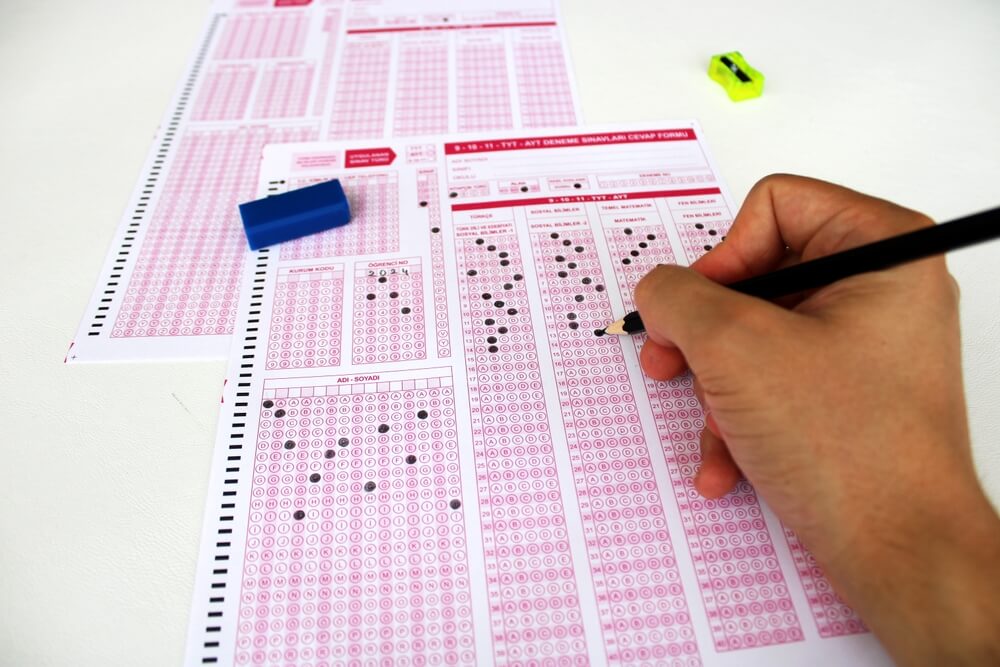People who are excited and inspired by the idea of helping people every day and working with clients one-on-one to see incredible transformations in mobility and pain relief may want to consider a career in physical therapy. To become a licensed physical therapist, a doctorate in physical therapy (DPT) is required. During a DPT program, students will learn how to assess injuries, create treatment plans, and work with clients in a clinical setting.
Introduction to the Physical Therapy Profession
A physical therapist helps patients recover mobility and manage pain through exercises, manual therapy, and education. Physical therapists assess and treat conditions caused by injuries, surgeries, and chronic illnesses. They create personalized rehabilitation plans for their patients and help them recover. The goal of a physical therapist is to improve patients’ physical function, prevent further injury, and enhance their quality of life.
Overview of a Career in Physical Therapy
The education needed for physical therapy typically includes a DPT degree and state licensure to work as a practitioner. A physical therapist may work in various settings, including hospitals, clinics, sports facilities, and private practice offices. This career offers the opportunity to make a significant impact on the lives of patients as well as strong job growth and the chance to specialize in areas such as pediatrics, sports medicine, and geriatric care. In many cases, becoming a physical therapist is both emotionally and professionally rewarding, offering a balance of patient interaction with problem-solving for physical challenges.
The Role and Impact of a Doctor of Physical Therapy (DPT)
A DPT can play a critical role in healthcare by assessing, diagnosing, and treating individuals with movement disorders, injuries, and other chronic conditions. DPTs develop personalized treatment plans to help patients restore function and range of motion and alleviate pain. Through hands-on therapy, exercise programs, and patient education, DPTs empower patients to improve their quality of life and participate in the activities they love.
Physical therapists also have an impact beyond patient care by contributing to public health by promoting physical activity, preventing injuries, and advocating for wellness. DPTs often work in collaboration with other healthcare professionals, including oncologists, general practitioners, occupational therapists, and psychotherapists.

Educational Prerequisites for a DPT Program
Although Doctor of Physical Therapy programs may have somewhat different requirements for applicants, the prerequisites generally include:
- An undergraduate degree (completed or in progress) from an accredited college or university
- A high GPA, with special emphasis on science-related courses
Necessary Undergraduate Coursework
DPT programs build on a strong foundation of undergraduate work in science courses. To qualify and be prepared for the rigorous, graduate-level science work of DPT degree programs, applicants should have completed science courses, such as Anatomy & Physiology, Chemistry, Physics, Biology, Statistics, and Psychology, and they should have obtained satisfactory grades in these areas, which typically means at least a C average, although different schools may have different requirements.
Choosing the Right Undergraduate Program
No specific major better prepares undergraduate students for a DPT program. If students complete the prerequisite science courses, they will be eligible to apply for most DPT programs, regardless of their major. That said, many DPT students are well prepared for their graduate coursework by choosing majors like kinesiology, biology, and psychology. Undergraduate students should choose an area that holds their interest while also allowing time to complete science requirements.
The DPT Program Admissions Process
The first thing to know about how to become a Doctor of Physical Therapy is that a doctoral degree is required. Applying for admission to any doctoral program can be somewhat competitive, with high-performing undergraduates competing for limited spaces. Understanding the process and requirements for applying to a DPT program can make the process go more smoothly, no matter which program you choose.
Understanding the Application Requirements
Before selecting a DPT program, potential applicants should be sure to review the application requirements. Not every school will have the exact same DPT program requirements, but most are similar and include:
- Completed Application: Most programs use the Physical Therapy Centralized Application System (PTCAS), which means that applicants who choose to apply to more than one school only need to complete one application and submit it to the central database.
- Official Undergraduate Transcripts
- Letters of Recommendation
- Completed Personal Essay
- Documentation: At least 40 hours of clinical observation under the supervision of a licensed physical therapist may be necessary before beginning the program.
- Signature on the DPT Academic and Technical Program Standards Statement
Entrance Exams: The GRE and Others
Graduate programs vary in terms of their entrance exam requirements. Some physical therapy programs require that applicants complete the Graduate Record Examination (GRE), while others do not. For example, the DPT degree program at Russell Sage does not require applicants to take the GRE. In more cases, many graduate-level programs are not requiring the GRE exam, as it has not been shown to be predictive of academic success.
Potential applicants should find out well in advance whether their chosen program requires the GRE so they can study for and complete the exam and still have time to apply for their desired cohort.

Overview of DPT Program Curriculum
A DPT degree program curriculum includes lectures, lab work, and practical experience working with physical therapy patients. The goal of a DPT program is to graduate physical therapists who know how to diagnose, treat, and collaborate with patients for the best possible outcomes.
Core Components of DPT Education
The core components of DPT education fall into a few different categories:
- Physiology: Human anatomy, exercise science
- Pathology: Diagnosing illness, infection, disease, and injury, clinical research
- Practice: Patient communication, business practices
Over the course of a DPT program, courses within these categories will cover working with patients across the human lifespan as well as how to work with other clinicians, such as physicians, oncologists, occupational therapists, surgeons, and medical imaging specialists.
Clinical Education and Internships
Clinical education is also key to a successful DPT program as is hands-on education by way of internships. During a DPT program, students are typically introduced to clinical work in their second year after developing a foundational knowledge of physical therapy principles. By the end of a DPT program, students may work up to full-time in a clinical setting under the supervision of a licensed physical therapist.
Licensing Requirements for Physical Therapists
One of the key steps to becoming a physical therapist is to obtain a license. Physical therapists are licensed through state licensing bodies in the states where they choose to work. Licensing requirements may differ from state to state but in general have minimum education requirements, such as a master’s or doctoral degree as well as standardized exams, such as the National Physical Therapy Examination (NPTE).

National Physical Therapy Examination (NPTE)
The National Physical Therapy Examination (NPTE) is a standardized examination created and proctored by the Federation of State Boards of Physical Therapy (FSBPT). The exam consists of 225 objective, multiple-choice questions covering the major areas of physical therapy. Practice exams and study guides are available from the FSBPT online.
State Licensing Requirements
In New York, physical therapists are licensed through the New York State Department of Education (NYSED) Office of the Professions. To be eligible for licensure in New York, applicants must:
- Complete a physical therapy program (master’s or doctoral level), either accredited by the Commission on Accreditation in Physical Therapy Education (CAPTE) or registered with the state
- Complete the NPTE with satisfactory results
- Be of good moral character
- Be at least 21 years old
- Submit an application fee to the licensure board
Specialization and Continuing Education
After becoming a licensed physical therapist, graduates may choose to specialize in certain types of physical therapy, such as a specific population or specific injury rehabilitation. Regardless of specialization, physical therapists must meet continuing education requirements to maintain licensure.
Specializing Within Physical Therapy
Physical therapy can address a broad range of concerns across the spectrum of human development. Many physical therapists choose to specialize in a certain area to build their expertise. The American Board of Physical Therapy Specialties (ABPTS) offers the following 10 specialization certifications, each of which has its own requirements:
- Cardiovascular and Pulmonary
- Clinical Electrophysiology
- Geriatrics
- Neurology
- Oncology
- Orthopedics
- Pediatrics
- Sports
- Women’s Health
- Wound Management
Specialization certification may help physical therapists attract more clients or obtain desired employment.
Continuing Education Opportunities
In New York, physical therapists must complete 36 hours of continuing education for each three-year period of their licensure. Continuing education courses for NY physical therapists must be conducted by an approved New York State provider and in an approved subject area. More information is available from the NYSED.
Building a Successful Career in Physical Therapy
There are many ways to build and maintain a successful career in physical therapy. Aspiring physical therapists should consider both the population they want to work with and the work environment they prefer. Some PTs may choose to start their career working in a hospital or rehabilitation facility before starting their own private practice. However, many therapists work in clinical settings for their entire careers, focusing on a specific population or type of rehabilitation and becoming subject matter experts.
Developing Professional Skills and Networking
While DPT programs teach new physical therapists clinical skills, gaining experience as a full time PT is the best way to develop the professional skills to be successful in this career field. Working with patients and networking with other physical therapists is key to expanding knowledge and figuring out what kind of clinician you want to be. DPT students can start by developing relationships with their classmates and the faculty in their program, who are often the source of important professional connections and referrals after graduation.
Navigating the Job Market
According to the Bureau of Labor Statistics (BLS), the demand for physical therapists in the U.S. is expected to grow by 15% between 2022 and 2032, which is much faster than the average for all professions. Graduates of an accredited DPT program should be well-equipped to find a physical therapist job. Indeed, successful internships during a DPT program may lead to full-time employment upon graduation or to referrals for other positions.
Learn More About the Physical Therapy Program at Russell Sage
The Russell Sage Doctor of Physical Therapy program is an excellent option for aspiring physical therapists. The three-year program includes fundamental education in evidence-based physical therapy practices and extensive opportunity for hands-on clinical training. To learn more and start your application, reach out to Sage today.

